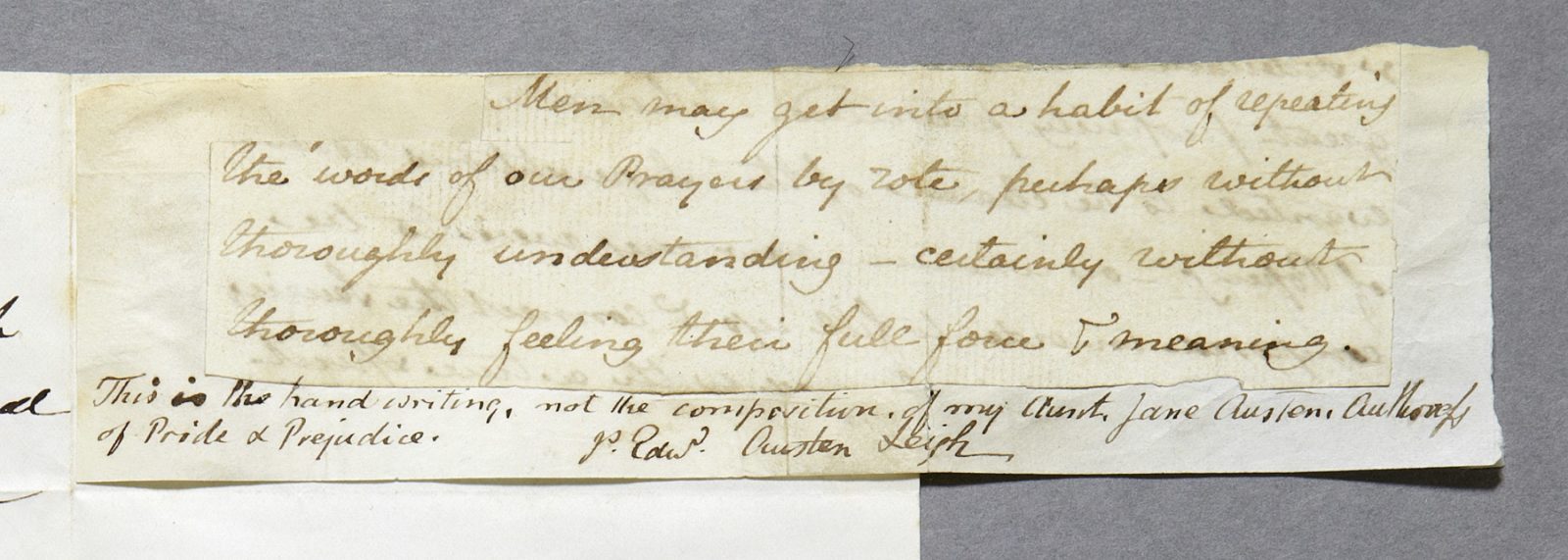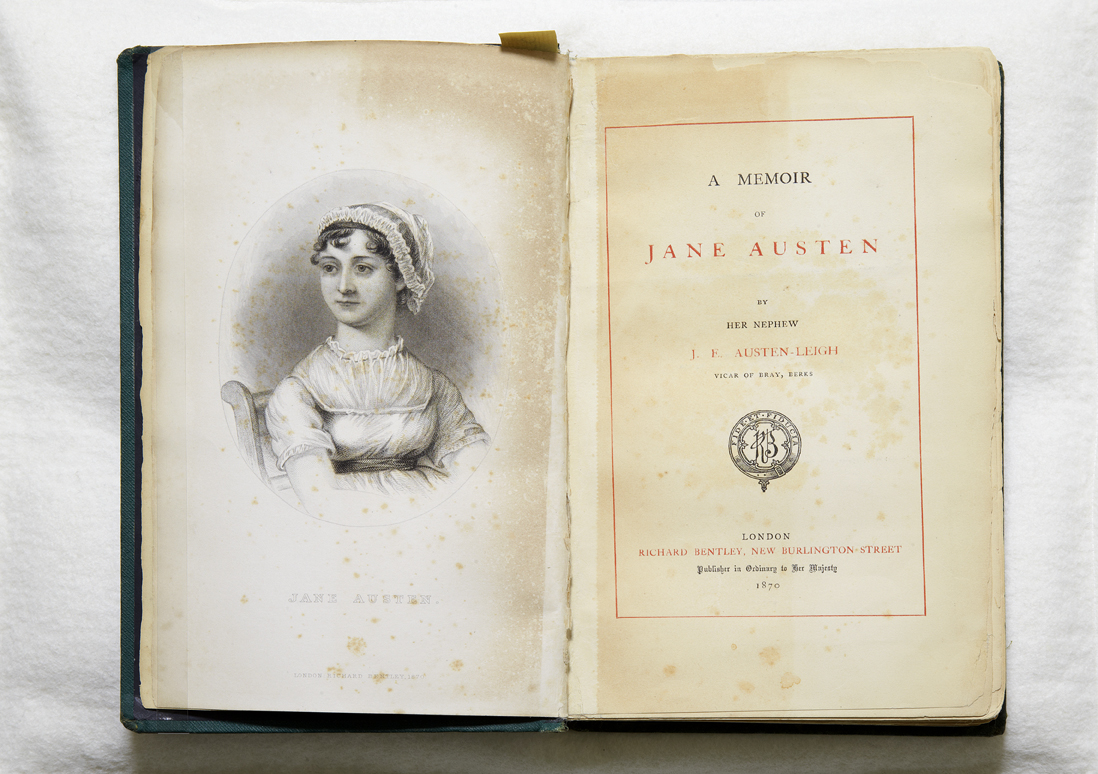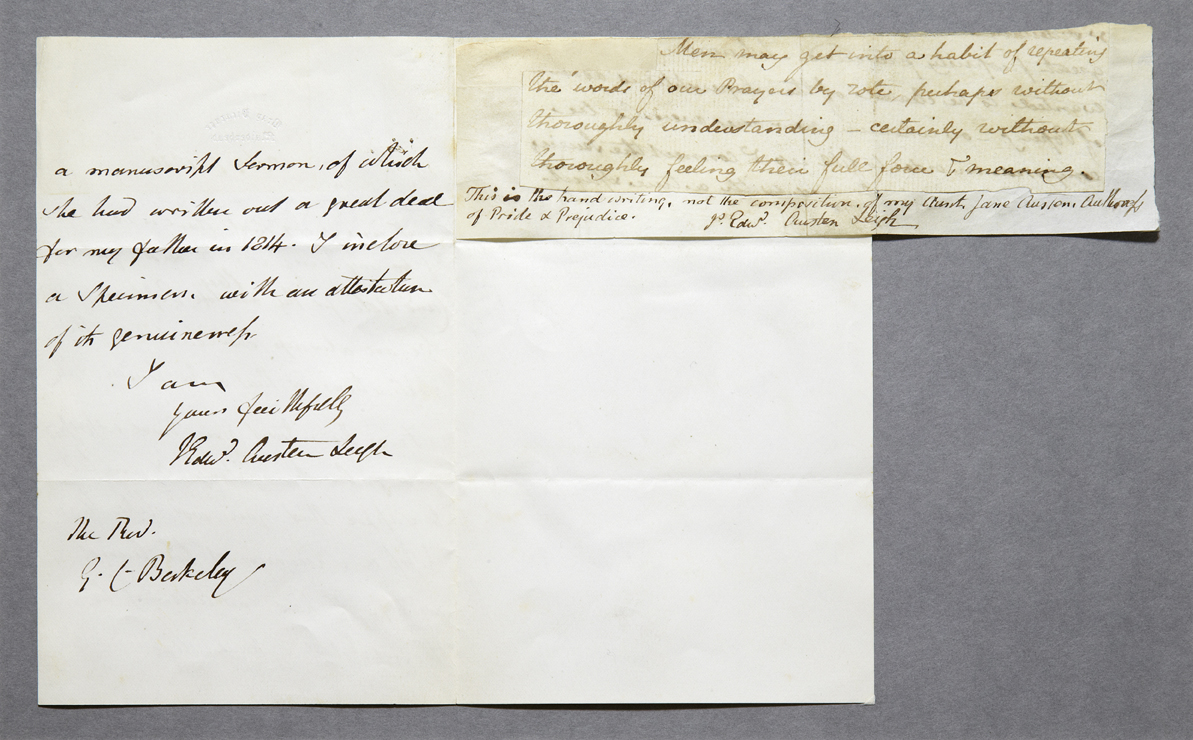Memoir & Sermon Scrap
Object name: Memoir & Sermon Scrap
Object number: CHWJA:JAH380.1-3
Category: Objects, books
Description: Jane Austen manuscript fragment. Part of sermon by James Austen, copied out by Jane. Previously glued into first edition of A Memoir of Jane Austen by James Edward Austen Leigh.
1870 first edition of A Memoir of Jane Austen by James Edward Austen Leigh to which Jane Austen sermon scrap was once attached.
Letter that was attached to the sermon scrap and edition of A Memoir of Jane Austen. From James Edward Austen Leigh, 1870.
Made:
Sermon scrap: c.1814
A Memoir of Jane Austen and letter: published in 1870
Context: James Edward Austen-Leigh’s A Memoir of Jane Austen was published in 1870. It is the first major biography of Jane Austen, written by her nephew with help from his sisters Anna and Caroline. It describes Aunt Jane as they came to know her in her Chawton years, when she was in her thirties and they were still children. With its precious first-hand insights, it has informed all subsequent biographies. But these are partial family memories, shaped by the Hampshire branch of the Austens, the family of Jane’s eldest brother, James.
The manuscript scrap and Austen-Leigh’s letter to an early fan, attached to this copy of the Memoir, tell us how famous his aunt had become by 1870. They remind us, too, of Jane Austen’s religious convictions: she was an Anglican. Her father, her brother James, and his son, the biographer Austen-Leigh, were all Anglican clergyman. In the letter, Austen-Leigh points out that the scrap, copied out in his aunt’s hand, is from one of his father’s sermons, and he dates it to 1814. It reads:
‘Men may get into a habit of repeating the words of our Prayers by rote, perhaps without thoroughly understanding,—certainly without thoroughly feeling their full force & meaning.’
The scrap echoes a discussion in Mansfield Park, Chapter 34, on the ‘art of reading’ and its importance to the modern clergyman. Mansfield Park, an intensely serious novel in which religion serves a public/political interest, was published in May 1814.
The scrap demonstrates the cross-fertilization between Jane Austen’s creative writing and the wider life of her family, raising the possibility that her novel inspired James’s sermon. Certainly, topics of such high seriousness were under discussion among the Austens in 1814, as witnessed by Jane’s letter of 2 September, where she writes to Martha Lloyd that ‘I place my hope of better things on a claim to the protection of Heaven, as a Religious Nation, a Nation inspite of much Evil improving in Religion.’



